NIKKOR - The Thousand and One Nights No.92

A high-power zoom lens reborn as a high-performance lens
Ai Zoom Nikkor ED 50-300mm F4.5
In this Tale, I'll introduce the Ai Zoom Nikkor ED 50-300mm F4.5, which is the successor to the ZOOM-NIKKOR AUTO 50-300mm F4.5 introduced in Tale 62. Just how did the lens evolve from the original high-power zoom lens, ZOOM-NIKKOR AUTO 50-300mm F4.5?
by Kouichi Ohshita
After release of the ZOOM-NIKKOR AUTO 50-300mm F4.5
As I said in Tale 62, the ZOOM-NIKKOR AUTO 50-300mm F4.5, an earlier lens to offer these specs, was released in 1967. In 1975, it was replaced by the NEW ZOOM-NIKKOR 50-300mm F4.5, which had a new appearance and for which a new coating was adopted. The Ai Zoom-Nikkor 50-300mm F4.5, the final incarnation of this optical system, was released in 1977. For ten years, the ZOOM-NIKKOR AUTO 50-300mm F4.5 and the new version of the lens were unparalleled high-power zoom lenses, reigning over the market. However, these lenses had three major faults. The first was their large size, the second was the significant change in aberration at each focal length, and the third was the axial chromatic aberration typical of telephoto lenses. Designers explored improvements to overcome or reduce these faults, but failed to produce a lens worthy of release.
The most difficult problem to solve was the axial chromatic aberration issue. As mentioned several times in The Thousand and One Nights, the longer the focal length, the more difficult it is to correct axial chromatic aberration. In addition, the presence of a zoom group that changes the focal length in a zoom lens makes correcting axial chromatic aberration at the telephoto end even more difficult than it is with a prime lens. In fact, when comparing axial chromatic aberration at the telephoto end of the ZOOM-NIKKOR AUTO 50-300mm F4.5 introduced in Tale 62 with that of the prime Ai NIKKOR 300mm F4.5 S introduced in Tale 70, we see that despite having the same 300mm f/4.5 specs, the 50-300mm exhibits just under 40% more axial chromatic aberration than does the 300mm f/4.5. The magnitude of this axial chromatic aberration is what causes the flare-like appearance at the telephoto end.
The key to solving this telephoto lens' axial chromatic aberration was the ED lens developed in the 1970s. This new ED lens advanced the campaign to improve the 50-300mm lens.
The Ai Zoom Nikkor ED 50-300mm F4.5
Yutaka Iizuka was in charge of designing this lens. This Tale marks his third appearance in The Thousand and One Nights, following Tales 42 and 69. Iizuka was known for his expertise in designing zoom lenses, and around the time I started at the company, he was designing zoom lenses for television cameras in another section.
When he began designing the lens is unclear, but it is thought to have been around 1973 or early 1974 at the latest. Many people have told me that finalizing the design for the lens was very difficult. It's true. The previous ZOOM-NIKKOR AUTO 50-300mm F4.5 high-power zoom lens had to be made smaller and performance had to be increased. Naturally, the higher the zoom ratio of a lens, the greater the distance lens elements move with zooming. This tends to increase the overall size. It also becomes more difficult to maintain a certain level of performance throughout the entire zoom range. Simply reducing the size of the lens requires increasing the power of each lens group, but there are limits on the amount of increase associated with aberration correction. It seems unlikely that these limits could be overcome by conventional approaches. With this mind, Iizuka arrived at a new zoom structure after repeated trial and error. With this new structure, the first lens group was fixed with zooming. Prototype production of this new structure began in October of 1974. The prototypes were then assembled and tested, and it was decided the glass materials would be changed for some of the lens elements. Mass production was initiated and the Ai Zoom Nikkor ED 50-300mm F4.5 was finally released in May of 1977.
Lens construction
Fig. 1 is a cross-section of the Ai Zoom Nikkor ED 50-300mm F4.5 and Photo 2 is the lens itself.


This lens is a four-group zoom lens in which the first group has positive refractive power, the second group has negative refractive power, the third group has positive refractive power, and the fourth group serves as the master lens. With the first and fourth groups fixed, the movement of the second and third groups allows for changes in the focal length with zooming. The second element in the first group is an ED lens that significantly reduces axial chromatic aberration.
Put this way, the zoom structure might seem to be the same as the afocal zoom lens introduced in Tale 42 and elsewhere. In fact, it is completely different. For one thing, the fourth group, which serves as the master lens, is a weak, negative-power group, while groups one through three as a whole have positive power. When zooming from wide-angle to telephoto positions, the second group always moves toward the image plane and the third group always moves toward the photographic subject. The second negative-power group aids in increasing the lens focal length by moving toward the image plane. At the same time, movement of the third positive-power group toward the subject also aids in increasing the lens focal length. In other words, the movement of both the second and third groups contributes to changes in focal length. With an afocal zoom structure, however, the movement of the second group toward the image plane is responsible for the majority of the change in focal length, while the movement of the third group does little to change the focal length. By configuring the structure so the second and third groups change the focal length, Iizuka was able to design a lens with a 6x zoom ratio with only a small amount of movement. In addition, the negative power of the fourth master group contributes to a shorter overall length.
However, this idea for the zoom structure alone did not make the 50-300mm spec easy
to achieve. With this lens, the second group is basically a variable magnification group,
and the third group conveniently compensates for fluctuation in the focal position of the
second group. When the zoom equation is established and solved in this way, it becomes
difficult to draw the zoom trajectory when the focal length exceeds about 200 mm.
Iizuka resolved this issue by coming up with the idea of changing the roles of the
second and third lens groups. As I mentioned before, the movement of both the second
and third groups is always in the direction that increases the focal length. If this is the
case, it should be possible to solve the zoom equation by considering the third group the
variable magnification group and the second group the compensation group. When the
zoom trajectory was drawn with this in mind, they found that the trajectory still
disappeared at the mid-range focal length, but it was possible to draw a zoom trajectory
from the mid-range focal length to 300 mm. They then examined the two zoom
trajectories and came up with one that would smoothly connect the cams. Simply put,
this lens is a zoom lens that combines a 50 mm to mid-range focal length zoom lens
with a mid-range focal length to 300 mm zoom lens using the exact same lens
arrangement. Nikon refers to this type of change in zoom trajectory internally as a
"switch" and the Ai Zoom Nikkor ED 50-300mm F4.5 is a good example of a zoom
lens that cleverly switches between zoom trajectories.
There is one more secret about this lens. It is the concave element positioned at the front of the fourth group. This concave element is designed so that light passing through it is always afocal. There are many possible reasons for this, including the convenience it offers for calculating zoom trajectory, but I tend to think that it is because making light afocal with a concave lens element enabled the adoption of the standard lens structure used for four-group afocal zoom lenses in the fourth master lens group structure on the imaging (focal plane) end. If we compare the Ai Zoom Nikkor ED 50-300mm F4.5 cross-section with that of the Nikon Series E 75-150mm F3.5 lens introduced in Tale 42, you'll see that the structure of the fourth group is similar.
Lens rendering
As always, let's take a look at the rendering characteristics of this lens with actual images. I used DX lenses for Tales 88 and 90, so it had been a while since I used the FTZ mount adapter with the full-frame Z 6 mirrorless camera. When a manual-focus Ai lens is used with the FTZ, shooting is performed with actual aperture metering. However, as lens information is not transmitted to the camera when a manual focus lens without electrical contacts is used, focal length and maximum aperture information must be registered with the camera. Registering this information enables recording of focal length information in image Exif data as well as proper operation of the camera's on-board vibration reduction function. However, information is not transmitted to the camera when the aperture ring is rotated, so users must be aware that aperture information in Exif data will not change.
Until now, I had only used prime lenses with the Z 6, so I only had to register lens information once, but since I used a zoom lens this time, I had to register information for each focal length on the focal length indicator-50 mm, 60 mm, 70 mm, 85 mm, 105 mm, 135 mm, 200 mm, and 300 mm-in advance, and then switch between them whenever I changed the focal length. It was a very tedious process, but I was very happy to have a functional on-board vibration reduction function with hand-held shooting.
The Ai Zoom Nikkor ED 50-300mm F4.5 is 100 g lighter and 45 mm shorter in overall length at the wide-angle end, and 78 mm shorter at the telephoto end than the ZOOM-NIKKOR AUTO 50-300mm F4.5 introduced in Tale 62. A weight reduction of 100 g may not seem like much for a lens that weighs more than 2 kg, but where I didn't feel like shooting hand-held with the ZOOM-NIKKOR AUTO, I was willing to capture some of the sample images below hand-held without a tripod. The difference is the shorter overall length and less movement of the center of gravity with zooming. This means a steady hold on the lens is always possible. I really appreciated the significance of the overall length of the lens not changing with zooming. As always, the following samples were captured in RAW format and processed with lateral chromatic aberration correction and vignette control disabled. (Auto distortion control does not work with manual-focus Ai lenses because it cannot identify the lens.)
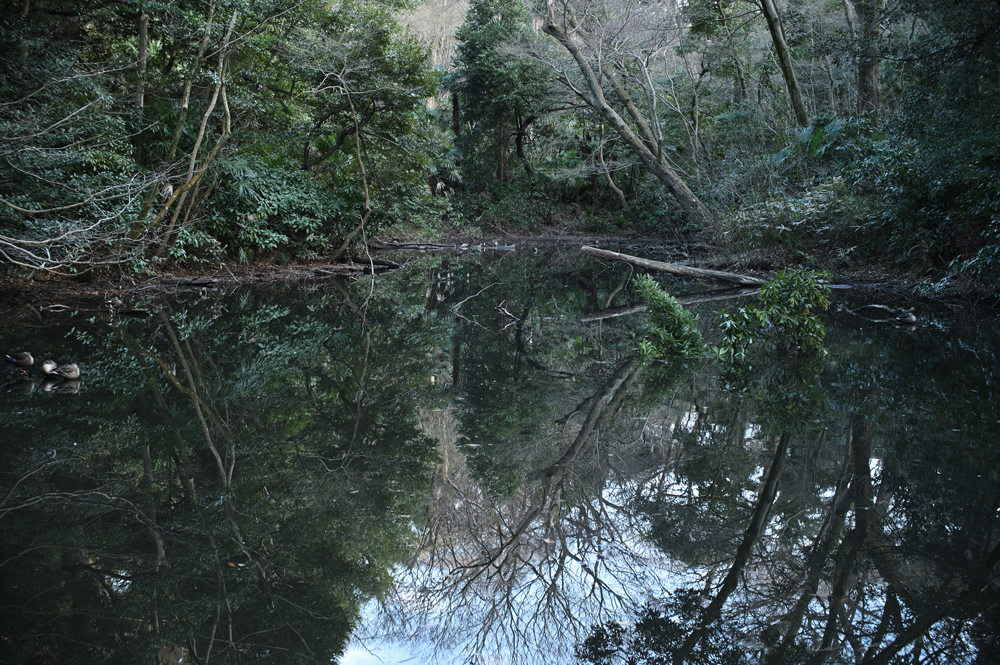
Z 6 + FTZ w/ Ai Zoom Nikkor ED 50-300mm F4.5 At 50 mm focal length, maximum aperture, shutter speed of 1/13 s and ISO 100, and developed using NX Studio
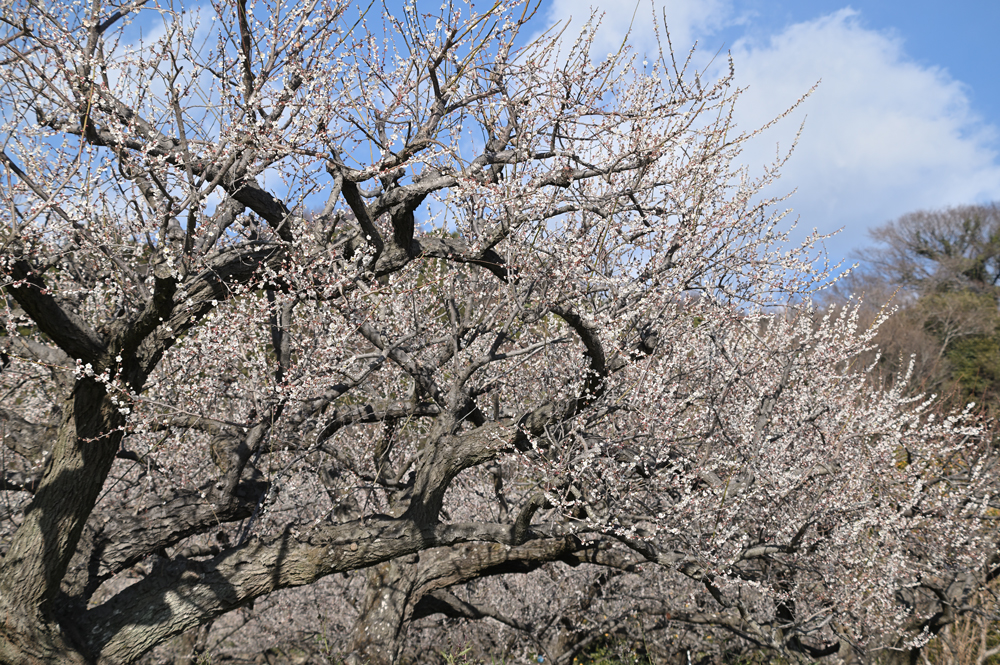
Z 6 + FTZ w/ Ai Zoom Nikkor ED 50-300mm F4.5 At 70 mm focal length, aperture setting of f/8, shutter speed of 1/320 s and ISO 100, and developed using NX Studio
Sample 1 was captured at the maximum wide-angle focal length of 50 mm at maximum aperture, and shows the surrounding area reflected in the surface of a pond. Even at maximum aperture, the majority of the image at the center of the frame is extremely sharp and there is no noticeable chromatic aberration. While there is some blurring and a drop in resolution at the extreme edges of the frame, there is little flare and good contrast is maintained. Stopping down the aperture from f/8 to f/11 makes the blurring less noticeable. There is also some peripheral illumination falloff with shooting at maximum aperture, but the characteristic works with this sample.
Incidentally, the lens exhibits -5% barrel distortion at the wide-angle end that may be noticeable with some scenes, though it is not in Sample 1.
Sample 2 is a picture of plum blossoms that was captured at the 70-mm focal length with the aperture set to f/8. The image is sharp across the entire frame, partly because the aperture was stopped down to f/8 for greater depth of field. There is almost no distortion at around 70 mm, so what is there is barely visible.
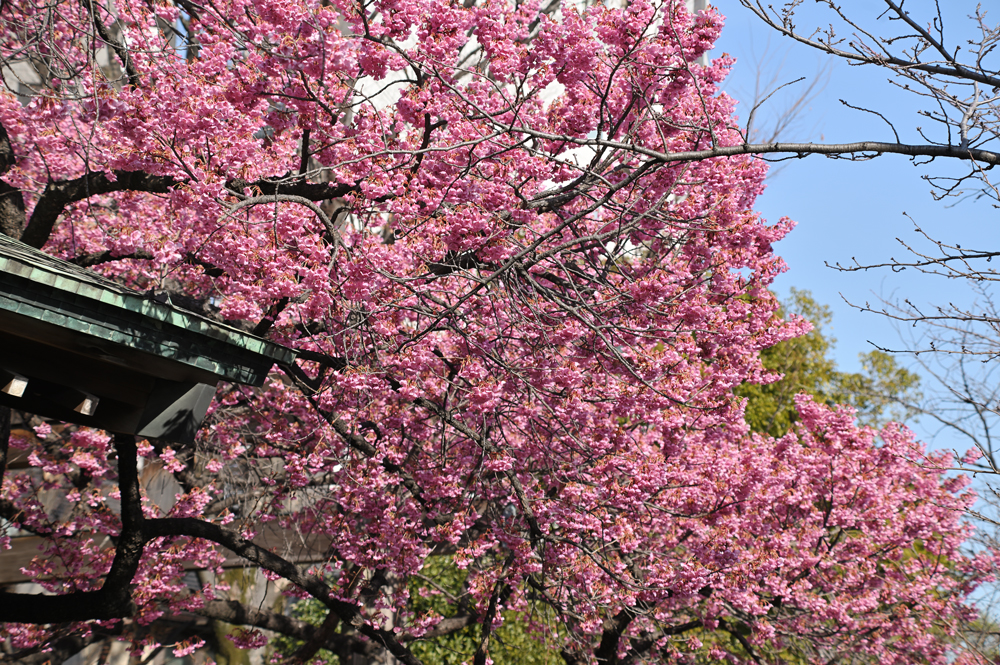
Z 6 + FTZ w/ Ai Zoom Nikkor ED 50-300mm F4.5 At 85 mm focal length, aperture setting of f/8, shutter speed of 1/200 s and ISO 125, and developed using NX Studio
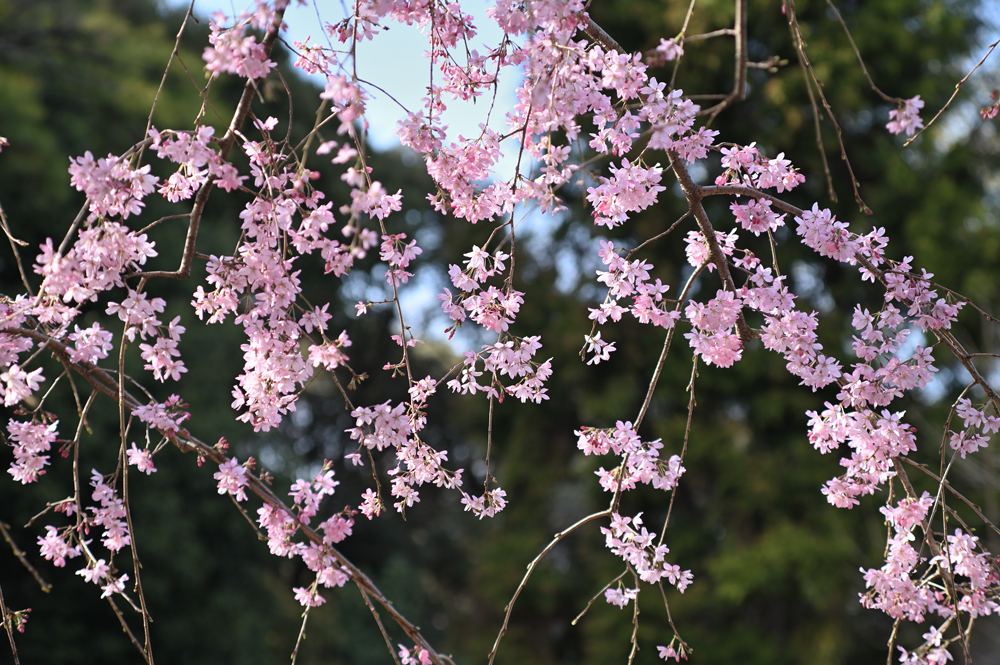
Z 6 + FTZ w/ Ai Zoom Nikkor ED 50-300mm F4.5 At 105 mm focal length, aperture setting of f/5.6, shutter speed of 1/125 s and ISO 100, and developed using NX Studio
Sample 3 is a photo of a cherry tree captured at a focal length of 85 mm and an aperture setting of f/8. The cherry blossom petals and branches, which are in focus, are sharp and clear with no visible axial or lateral chromatic aberration at the edges of the frame. The out-of-focus background is soft for pleasing bokeh.
Sample 4 is a photo of a weeping cherry in bloom that was captured at a focal length of 105 mm and an aperture setting of f/5.6. Based on the shape and size of the blossoms, this weeping cherry is likely a cultivar derived from Edo higan. The center of the image is very sharp, but you may be able to see some slight flare in the cherry blossom petals at the edges of the frame. This flare is caused by coma. Coma is almost perfectly corrected with this lens at the wide-angle and telephoto ends, but a little coma remains at mid-range focal lengths. It is greatest at 100-135 mm. This slight flare at the edges of the frame is likely caused by that. On the other hand, background bokeh is straightforward and helps to emphasize the cherry blossoms.
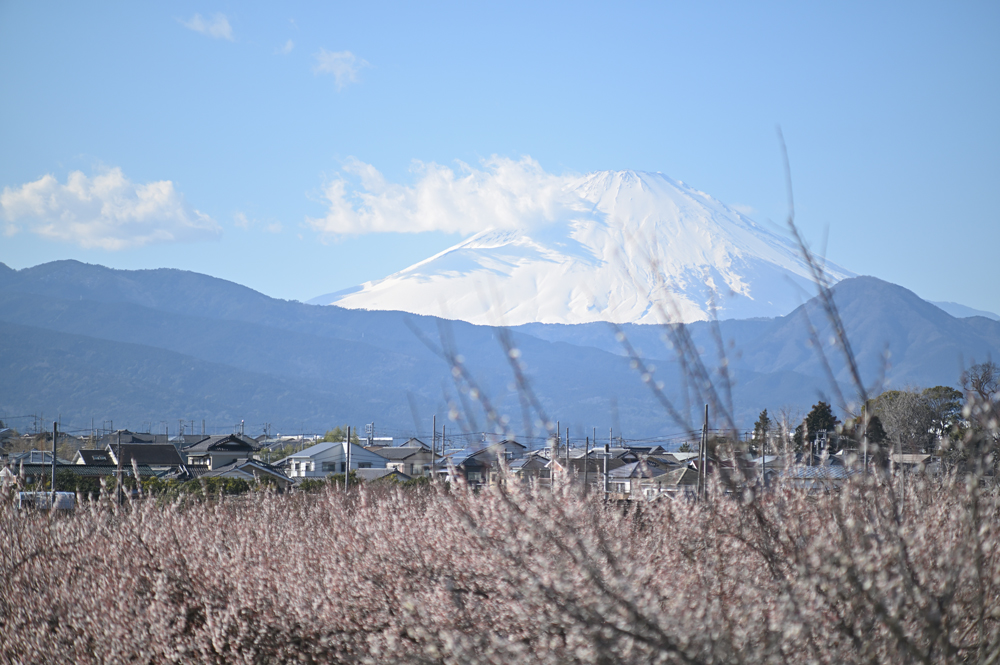
Z 6 + FTZ w/ Ai Zoom Nikkor ED 50-300mm F4.5 At 135 mm focal length, maximum aperture, shutter speed of 1/1250 s and ISO 100, and developed using NX Studio
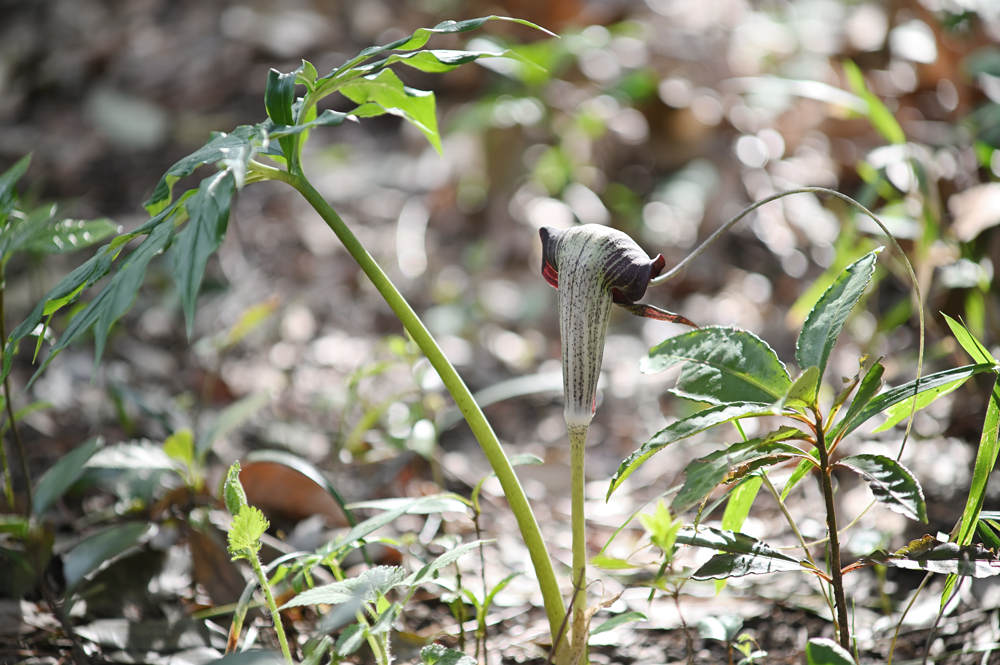
Z 6 + FTZ w/ Ai Zoom Nikkor ED 50-300mm F4.5 At 200 mm focal length, maximum aperture, shutter speed of 1/100 s and ISO 450, and developed using NX Studio
Sample 5 is a picture of Mt. Fuji captured at a focal length of 135 mm and maximum aperture. The distant view suffers somewhat from heat shimmer, but the center of the image is sharp. You can also see that as you move closer to the edges of the image, the outline of the subject exhibits a small degree of flare. The plum blossoms in the foreground are blurred because the image was captured at maximum aperture. The foreground bokeh at the center of the image is relatively soft, but that at the edges of the frame is distorted to look like rugby balls. Further, because the edges on one side of the bokeh are stronger, it appears to flow somewhat concentrically. This is the result of coma, a type of aberration that appears in images captured at focal lengths of around 100-135 mm, at the edges of the frame. Pincushion distortion can be noticeable at focal lengths of 135-300 mm, though it is not in this image.
Sample 6 is a photo of Arisaema Urashima (Japanese cobra lily) that was captured at 200 mm and maximum aperture. The name of the plant comes from the Japanese folklore character Urashima Taro, a fisher man, because the plant has a long, thread-like extension reminiscent of a fishing line, which connects to the story. The background in this image exhibits natural bokeh, reproducing the spring sunlight as intended.
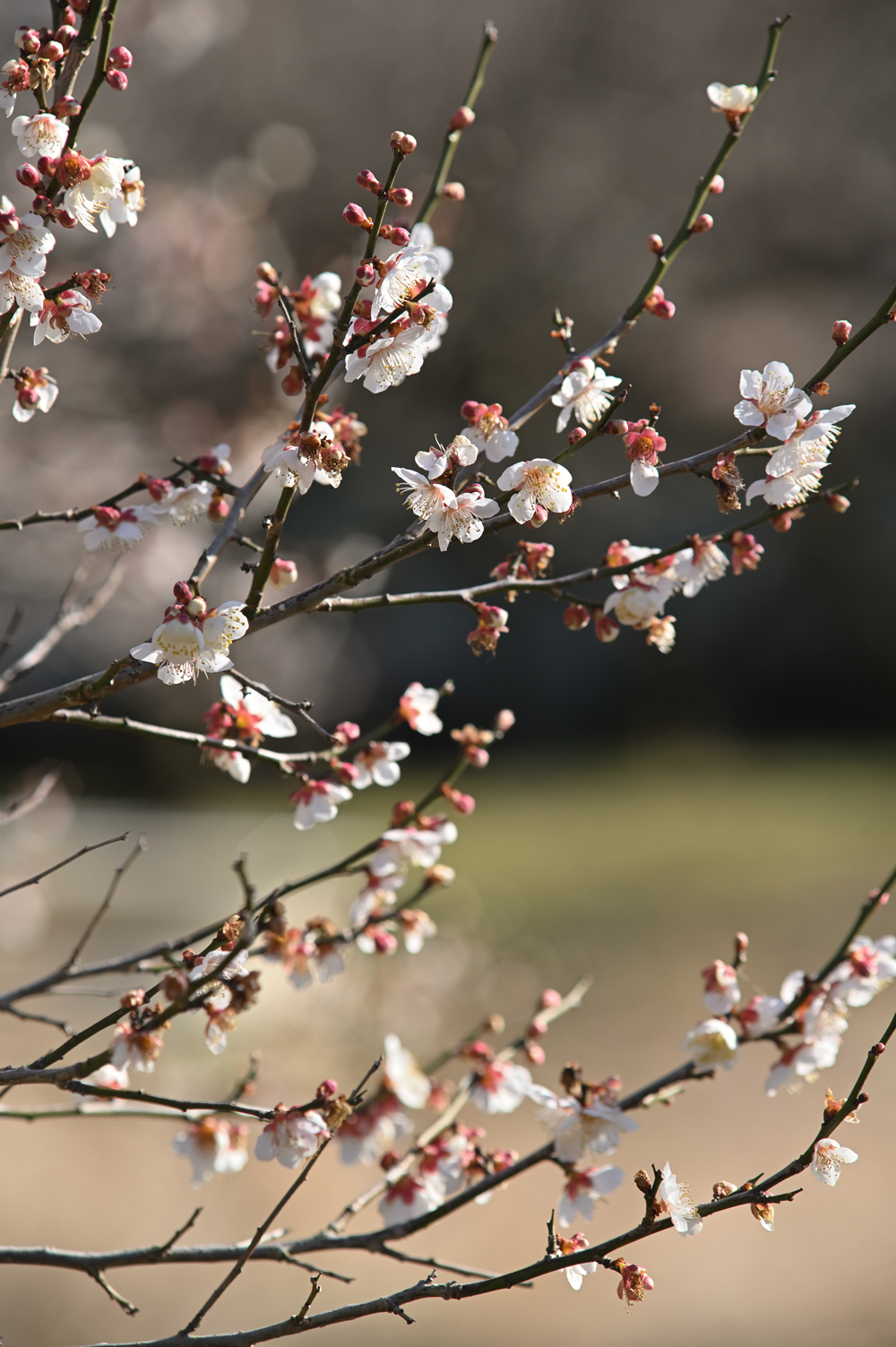
Z 6 + FTZ w/ Ai Zoom Nikkor ED 50-300mm F4.5 At 200 mm focal length, aperture setting of f/5.6, shutter speed of 1/400 s and ISO 280, and developed using NX Studio
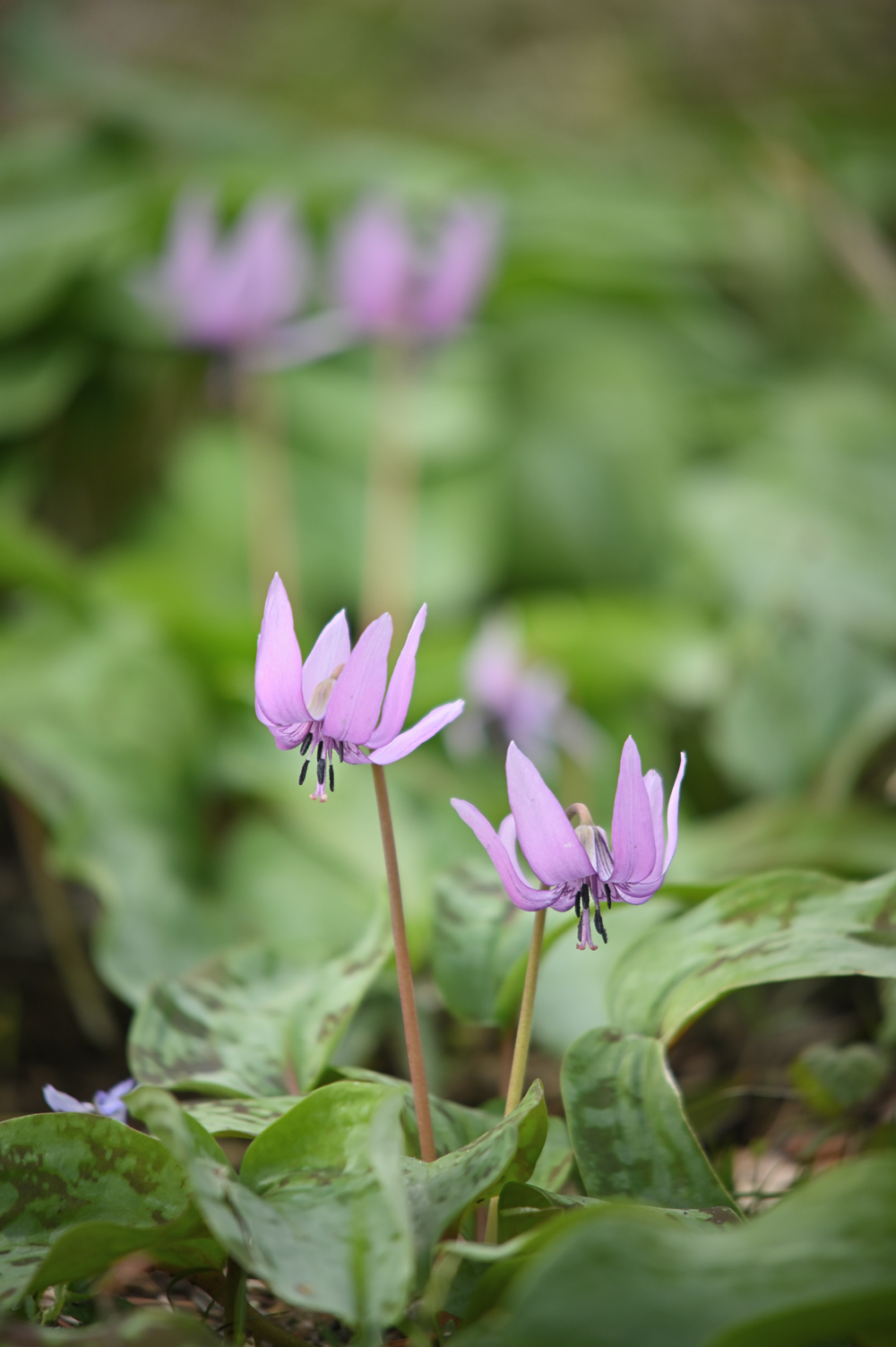
Z 6 + FTZ w/ Ai Zoom Nikkor ED 50-300mm F4.5 At 300 mm focal length, maximum aperture, shutter speed of 1/160 s and ISO 500, and developed using NX Studio
Sample 7 is a picture of plum blossoms that was captured at a focal length of 200 mm and an aperture setting of f/5.6. Stopping down the aperture to f/5.6 reduces the distortion of background bokeh that was evident in Sample 6 for more uniform bokeh throughout the entire frame. There is no noticeable chromatic aberration, and the image is sharp.
Sample 8 is a picture of Japanese fawn lily that was taken at the 300-mm focal length and maximum aperture. As the information I've provided about the Ai Zoom Nikkor ED 50-300mm F4.5 shows, this lens offers good performance and few drawbacks despite being a high-power zoom lens. Its only weakness, however, is its minimum focus distance of 2.5 m. At the 300-mm telephoto end, the reproduction ratio is 0.14x, which is quite close, but at 135 mm it is 1/15x and at the maximum wide-angle position it is 1/40x. Therefore, when taking close-ups of flowers, users will inevitably shoot at a 200-300 mm focal length. I could have gotten closer to this lily, but I set the lens to the minimum focus distance and then moved backwards until the image was in focus. The large bokeh makes for an impressive image, but to be honest, I wish I'd gotten closer and used a wider focal length. However, the results are satisfactory with the sharp in-focus portions and the natural bokeh in the background.
By the way, this lens exhibits fairly consistent performance regardless of the shooting distance because of the long minimum focus distance at focal lengths of 50-105 mm. At the 200-300 mm focal lengths, however, spherical aberration shifts in the negative direction and curvature of field at the edges of the frame shifts in the positive direction as the distance decreases. This is probably why background bokeh is smoother. As you can see, the spherical aberration causes flare along the edges of the lily petal on the left (slightly behind the focal plane).

Z 6 + FTZ w/ Ai Zoom Nikkor ED 50-300mm F4.5 At 300 mm focal length, maximum aperture, shutter speed of 1/160 s and ISO 250, and developed using NX Studio
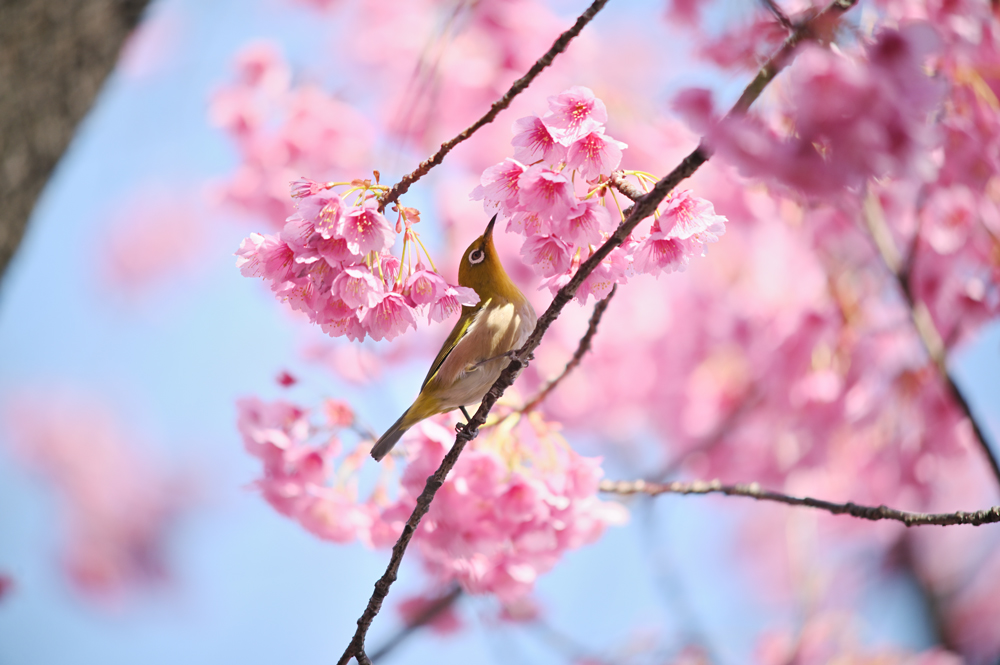
Z 6 + FTZ w/ Ai Zoom Nikkor ED 50-300mm F4.5 At 300 mm focal length, maximum aperture, shutter speed of 1/640 s and ISO 200, and developed using NX Studio
Sample 9 is a photo of a bogbean taken at the 300-mm telephoto end and maximum aperture. As you can see, this plant grows in fens and bogs, so is perfect for taking advantage of lens' support for shooting from a distance at 300 mm. While chromatic aberration is often noticeable in photos of white flowers, none is visible along the edges of these flowers. Vignetting is somewhat noticeable due to the flat background. This lens falls into a category of lenses that maintain an abundance of light at the edges of the frame when shooting at maximum aperture, but since peripheral illumination falloff is somewhat significant at the 50-mm wide-angle and the 300-mm telephoto positions, I recommend stopping down the aperture to f/8 if it is a problem.
Sample 10 is a photo of a Japanese white-eye in a cherry tree in full bloom captured at the maximum telephoto position of 300 mm and maximum aperture. Resolution in the white-eye's soft feathers is pleasing, and the flowers that are in focus are sharply rendered. The white-eye was quickly moving from branch to branch to lap up the blossoms' nectar, so there was no time to frame images using a tripod. I had to hold the camera while shooting. With the camera pointing upwards, the weight of both the camera and lens falls directly on the photographer, but I had no problems focusing or performing other operations. In situations like this, a monopod that reaches higher than eye level would eliminate the need to support the lens with the left hand for more agile shooting.
While capturing the sample images, ghost was not often an issue, except for white ghost that sometimes appeared in the corners of images captured at focal lengths of 200-300 mm with partial backlighting. This ghost occurs quite far from light sources like the sun, so it can be addressed by attaching a hood or cucoloris (cookie).
A high-performance high-power zoom that rivals prime lenses
The Ai Zoom Nikkor ED 50-300mm F4.5 was released in May of 1977 and gained popularity as a high-performance lens comparable to prime lenses. It can be said that this lens completely changed the general impression of high-power zoom lenses. In March of 1982 it was reborn as the Ai Zoom Nikkor ED 50-300mm F4.5S, which weighed 1,950 g and was 250 g lighter than its predecessor with a slimmer lens barrel that made it easier to handle and more loved by its users.
A succession of high-performance zoom lenses that rivaled prime lenses was released around the same time as the Ai Zoom Nikkor ED 50-300mm F4.5, including the Ai Zoom Nikkor 25-50mm F4 (released in 1979) introduced in Tale 46 and the Ai Zoom Nikkor 35-70mm F3.5 (released in 1977). In December of 1982, the long-awaited high-performance Ai Zoom Nikkor 80-200mm F2.8S ED telephoto zoom lens was released. Following this history, I think it's safe to say that this lens represents the beginning of high-performance telephoto zoom lenses.
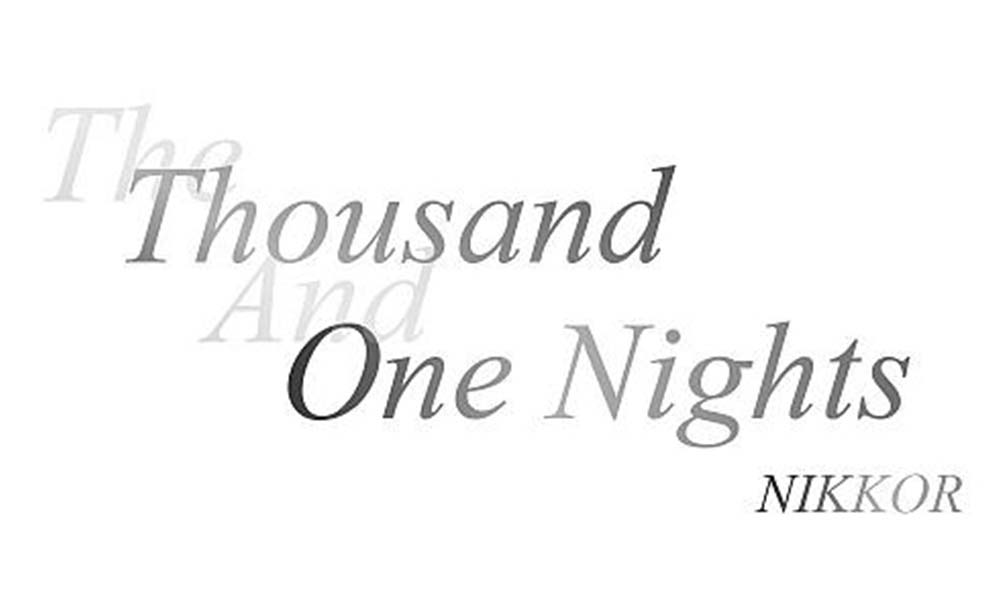
NIKKOR - The Thousand and One Nights
The history of Nikon cameras is also that of NIKKOR lenses. This serial story features fascinating tales of lens design and manufacture.

